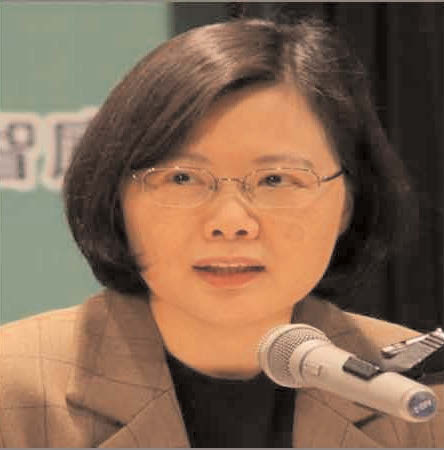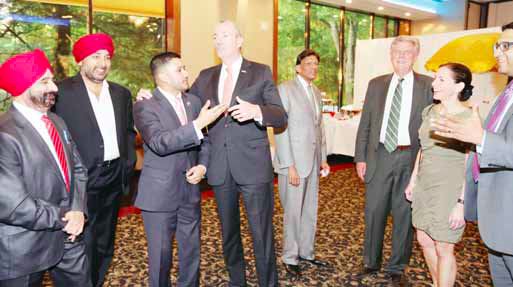
By Nitin Vora
“At the stroke of midnight hour when the world sleeps, India will awake to life and freedom…are we brave
enough and wise enough to grasp this opportunity and accept the challenge of future? “The great day” that
millions of people have been dreaming about for years, at last materialised – a day of rapturous jubilation.”
Friends, these are the words of India’s first Prime Minister Jawaharlal Nehru on the eve of August 15, 1947, first day of our freedom.

Mahatma Gandhi
The British control of India began in the 1600′ with the East India Company as a commercial venture. However, over the decades Britain’s strong hold and political aspirations over the country became stronger. A growing sentiment to overthrow Britain’s domination culminated in the Indian mutiny of 1857. Some of you must have seen the movie “Mangal Pandey”, yes, I am talking about that young Mangal Pandey who gave a clarion call to all the Indian soldiers to revolt against Britain.

Jawaharlal Nehru
This was known as “sepoy mutiny” he was sentenced to death and within 2 months the great war of Independence started on 29th March, 1857. Rani Laxmibai of Jhansi created history by fighting a great battle, she succumbed to her wounds in the battlefield. The Indian National Congress, the political party was founded and spearheaded the freedom struggle in 1885. Swami Vivekanands’s presentation of India’s religion and culture to the parliament of world religions in 1893 in Chicago (USA), made the whole world aware of India’s rich heritage.

Sardar Vallabhbhai Patel
On his return, he electrified the whole nation with his clarion call “Arise, awake, and stop not till the goal is achieved”. Dadabhoy Navaroji’s “Poverty and un- British-rule in India” stimulated economic nationalism in 1901. The bifurcation of Bengal in 1905, which then comprised of Assam, Bihar, Orissa and Bengal sparked off yet another revolutionary movement with burning and boycotting of foreign goods. In 1906, Bal Gangadhar Tilak, the first nationalist leader voiced the idea of home rule,.

Subhash Chandra Bose
Tilak gave us the mantra “Swaraj is my birth right”. In 1911, King George Vth annuls the partition of Bengal and Delhi is made the capital of India. Rabindranath Tagore, the author of our national anthem jan gan man…. becomes the first Indian to receive Nobel Prize in 1912. Mohandas Karamchand Gandhi returns to India in 1915 from South Africa, where he had led a successful peaceful-resistance movement against the British government. South Africa beautifully says : “You gave us Gandhi, we are giving back Mahatma” The Rowlett act was introduced in 1918 so that any political subject could be arrested and imprisoned. Both Gandhi and Tilak condemned this and the country rose, imbued with the spirit of rebellion.

Lala Lajpat Rai
On 13th April 1919, General Dyer enters Jallianwala Bagh with armored cars and troops and orders fire on unarmed men, women and children. 3,000 + were massacred in Jallianwala Bagh. The carnage of such heinous magnitude awakened the whole country . In 1920, Congress led by Gandhiji proposed a non-violent, non-co operation movement. Countless gave up their career and joined the movement.

Bhagat Singh
Jawaharlal Nehru and Subhash Chandra Bose, two radical nationalists emerge as important national leaders in 1928. Inquilab Zindabad was the mantra for three revolutionaries- Bhagat Singh, Sukhdev and Rajguru who were hanged to death in 1929. Gandhiji, along with colleagues embarked on a 60 mile march to the sea coast at Dandi in Gujarat, protesting against the excise tax on salt known as the famous Dandi March in December 1929 civil disobedience. Nehru becomes the Congress President at Lahore annual convention and declares nothing short of poorna swaraj. Nehru unfurls the first tricolor flag in Punjab.
January 26, 1930 was declared as Independence Day. India’s Republic Day is also celebrated on 26th January for this reason. Louis Fischer wrote, “the British beat the Indians with batons and rifle butts but the Indians neither cringed nor complained nor retreated, that made England powerless and India invincible.” Netaji, in 1939 forms Forward Block party. He was the most fierce and visionary activist who shook the very foundation of the British empire.
In 1940, Muslim League under Mohammad Ali Jinnah, demands separate state of Pakistan. Britain encouraged this in pursuance of their policy of divide and rule. Rasbehari Bose formed Azad Hind Fauj and handed it over to Netaji who said ” give me blood, I’ll give you freedom”. “Karenge ya marenge, do or die “quit India”, the national slogan given by Gandhiji was adopted on August 8th, 1942. British Prime Minister Atlee agrees to India’s Independence in 1945. Mohammad Ai Jinnah on August 16, 1946 gave a call for direct action day through countrywide demonstrations. This triggered Calcutta killing of 5000 people which also spread to other parts of the country.
Britain agreed to Jinnah’s demand and Congress Party accepted the partition of the country into India and Pakistan. On June 3 , 1947, Lord Louis Mountbatten announced the partitin of India as Union of India and Islamic Pakistan. Sardar Vallabhbhai Patel, the iron man of India with great wisdom and political foresight consolidated about 600 princely states, scattered all over India, without any bloodshed. Pakistan was born on 14th August 1947 and India achieved her freedom on August 15, 1947.
India became a Republic on January 26, 1950. Bankimchandra composed the song Vande Mataram in an inspired moment,. Rabindranath Tagore sang it by setting a glorius tune to it and it was left to the genius of Shri Aurobindo to interpret the deeper meaning of the song from which India received new nationalism. “We owe a lot to the Indians, who taught us how to count, without which no worthwhile scientific discovery could have been made”, this is India’s gift to the world”.
Albert Einstein said, paying tribute to India. “India is the cradle of the human race, the birth place of human speech, the mother of history, the grandmother of legend and the great grandmother of tradition. our most valuable and most astrictive materials in the history of man are treasured up in India only” said the great American writer Mark Twain.





Be the first to comment